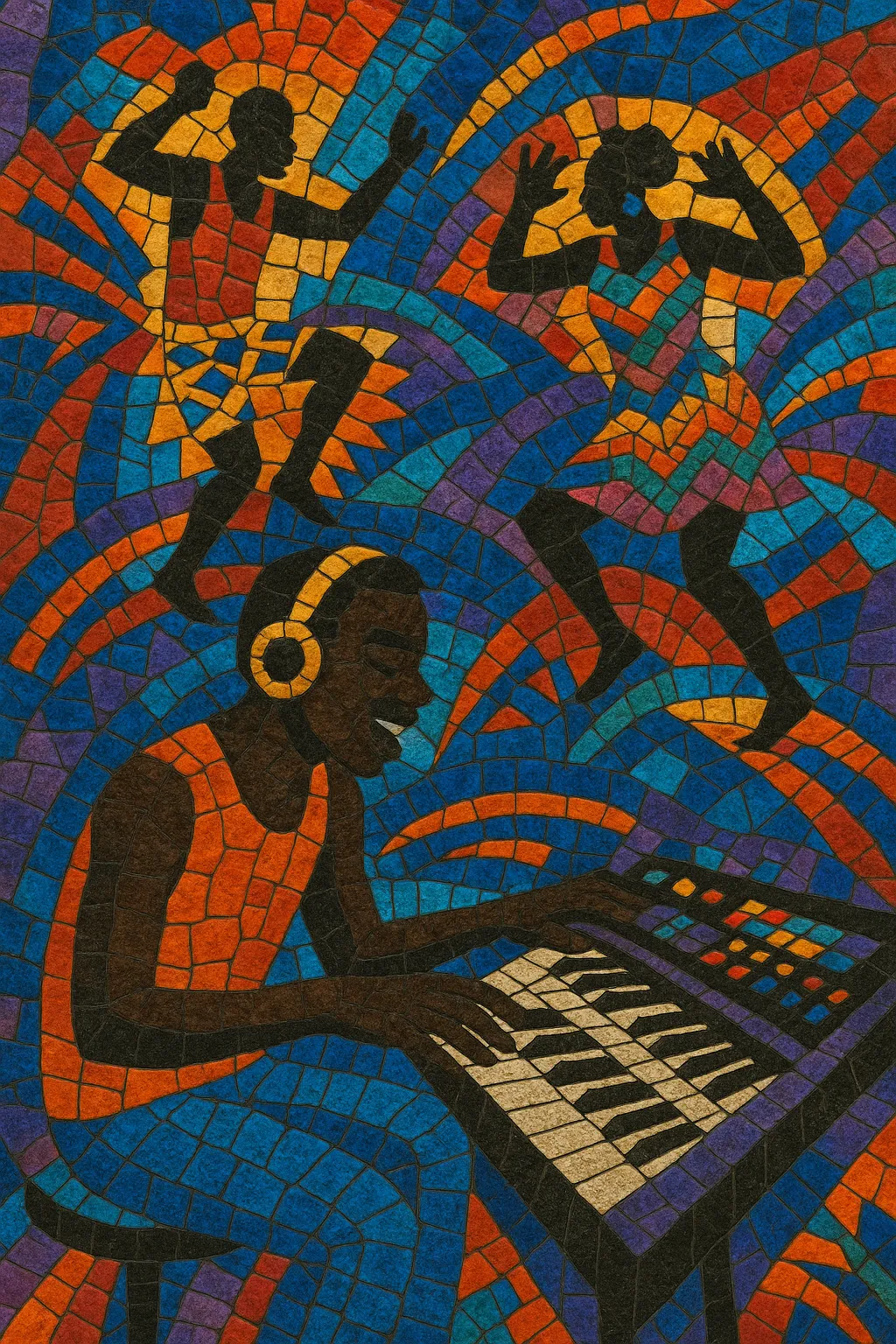
Shangaan electro is a hyper-accelerated, brightly melodic South African electronic dance style rooted in Tsonga/Shangaan popular music traditions. Spearheaded by producer Nozinja in Limpopo and later Johannesburg, it pushes tempos to around 170–190 BPM, using sharp drum-machine patterns, marimba- and xylophone-like synth timbres, and exuberant call-and-response vocals.
Unlike slower township styles such as kwaito, shangaan electro is lean, ultra-fast, and playful, foregrounding polyrhythmic handclaps, treble-forward percussion, and ecstatic dance routines. Its sound world is synthetic yet folk-inflected, translating communal Tsonga party aesthetics into a vividly digital, neon-hued club form.
Shangaan electro emerged in the 2000s in South Africa, primarily in Limpopo province among Tsonga/Shangaan communities. Producer and impresario Nozinja (Richard Mthethwa) reimagined local Tsonga dance music by swapping live percussion and guitars for drum machines and bright, mallet-like synthesizers. He retained community-centered vocals and dance troupes, but radically increased the tempo, codifying a kinetic, celebratory sound.
In 2010, the compilation “Shangaan Electro: New Wave Dance Music From South Africa” on Honest Jon’s introduced the style internationally. Its stars—Tshetsha Boys, Zinja Hlungwani, Mancingelani, and Tiyiselani Vomaseve—showcased a high-BPM aesthetic paired with dazzling choreographies and fluorescent costumes. A follow-up remix project, “Shangaan Shake,” drew leading leftfield electronic artists (e.g., Actress, Daphni, Theo Parrish), further amplifying the sound’s reach.
Live showcases featuring Nozinja’s troupe emphasized the genre’s total performance concept: singers, masked dancers, and blistering drum-machine tracks. The music circulated through indie and experimental circuits as much as club scenes, helping reframe perceptions of African electronic music as both traditional and avant-garde.
Nozinja’s 2015 album on Warp Records formalized production signatures—staccato marimba synths, snare-driven propulsion, and joyful, communal vocals. The style continued to inspire global experimentation and dialogue with other fast-paced scenes, while remaining tied to local Tsonga identity and social dance culture.

